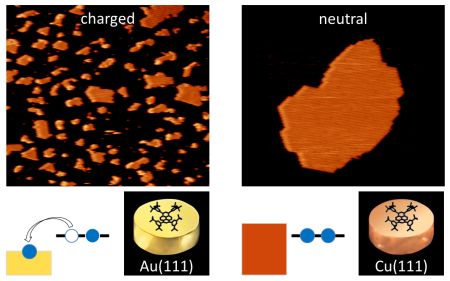News Library
A new type of anomalous coarsening
The growth of the first few molecular layers in a metal-organic interface represents a crucial step in any device fabrication since it determines the structure of the molecular film and the energy level alignment of the metal-organic interface.
In this work, the self-assembly behaviour of a series of ad-hoc designed molecules deposited on metallic model electrodes is studied by combining scanning tunnelling microscopy and atomistic simulations. The results show that the formation of the metal-organic interface is determined by the interplay between reversible molecule-substrate charge transfer, yielding intermolecular repulsion, and van der Waals attractions in driving the molecular assembly.
The systematic analysis carried out in this paper identifies a growth mode characterised by anomalous coarsening that is anticipated to occur in a wide class of metal-organic interfaces and therefore is expected to be of relevance to several research areas.
The work was conducted by the Costantini group in collaboration with Tim Jones and theoretical colleagues from King’s College London (De Vita group) and the synthetic chemistry group of D. Bonifazi at the University of Namur.
The full article available at http://pubs.acs.org/doi/abs/10.1021/nn505063w
DOI: 10.1021/nn505063w

